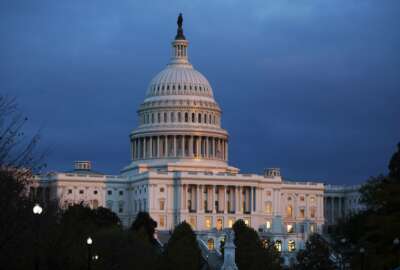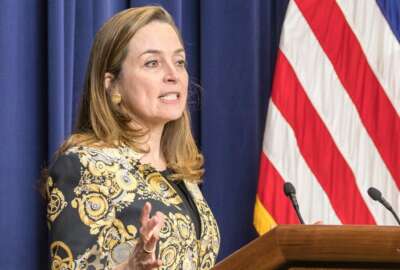
Ups, downs and other major highlights from Trump’s 2021 budget request
The president's 2021 budget request includes some $20 billion in agency program reductions and $28 billion in program eliminations. Here are several highlights...
Like previous years, President Donald Trump’s most recent budget request includes many familiar cuts, eliminations and proposals for civilian agencies in 2021.
The president’s request includes some $20 billion in agency program reductions and $28 billion in program eliminations.
It’s unclear how these proposed eliminations and cuts will fare in Congress, which has largely ignored them during previous years, but the president’s priorities for a few of the largest civilian agencies are undeniably clear. As in previous years, this time around Congress will likely turn a blind eye to many of these cuts and eliminations. But the White House request reflects the president’s priorities in his final year of his first term in office.
The Department of Veterans Affairs was the big winner among civilian agencies, with VA submitting another record-high budget request for 2021. VA’s $105 billion request includes investments in both department and community care health programs, as well as a significant funding bump for its major electronic health records modernization program. The president also requested $94.2 billion in advanced VA appropriations for future years, most of which would fund the department’s community care programs.
Depending on the outcome of a reorganization proposal, the Department of Homeland Security may also see a relatively small budget boost in 2021. Notably, the president has proposed transferring the Secret Service from DHS back to the Treasury Department. The Secret Service had been a part of Treasury since its inception in 1865. Congress moved the agency in 2003 with the establishment of DHS.
If the Secret Service does in fact move back to Treasury, DHS would see a 2% decrease from the previous year’s budget. But if the agency stays, DHS would experience a 3.2% budget increase.
Several modernization initiatives are driving a budget boost at the IRS, which would receive $300 million to continue needed IT upgrades and several projects aimed at digitizing the agency’s interactions with taxpayers.
In addition, the 2021 budget also proposes $15 billion in investments to improve IRS tax enforcement, which the White House estimated would generate $64 billion in net savings over 10 years.
Several other civilian agencies, however, don’t fare as well under the president’s 2021 budget request.
The Department of Housing and Urban Development, for example, would see a 15.2% budget cut from the previous year, while funding for the Department of Health and Human Services would drop by 10%.
For a further agency-by-agency breakdown of the president’s 2021 budget request for civilian agencies, click here.
The president also recommended eliminating more than a dozen small agencies, which included the U.S. Chemical Safety and Hazard Investigation Board, the Corporation for Public Broadcasting and the U.S. Trade and Development Agency, among others.
Trump has made a similar request since his first year in office, when he proposed the elimination of funding for 19 small, independent agencies.
Like in previous years, the president’s 2021 budget recommends an elimination of the Public Service Loan Forgiveness. As the name implies, the PSLF program forgives the remaining balance on student loans for individuals employed in government or non-profit organizations after a certain number of payments.
The 2021 request again includes funding to support the president’s proposed merger of the Office Personnel Management with the General Services Administration, despite recent defense policy language calling for a temporarily pause with that plan. Still, the president requested $70 million to support the OPM-GSA transition, more than the $50 million the administration asked for last year. The Trump administration has acknowledged Congress will need to authorize a merger of this sort.
Jory Heckman and Jason Miller contributed to this report.
Copyright © 2025 Federal News Network. All rights reserved. This website is not intended for users located within the European Economic Area.
Nicole Ogrysko is a reporter for Federal News Network focusing on the federal workforce and federal pay and benefits.
Follow @nogryskoWFED
Related Stories







